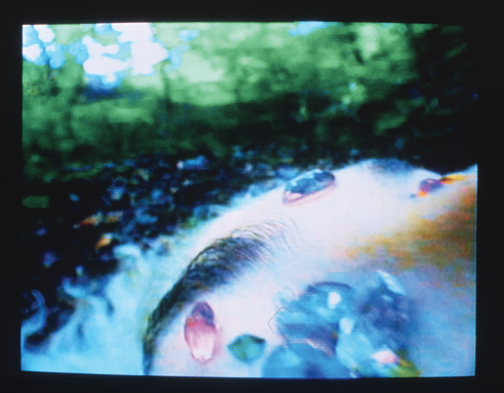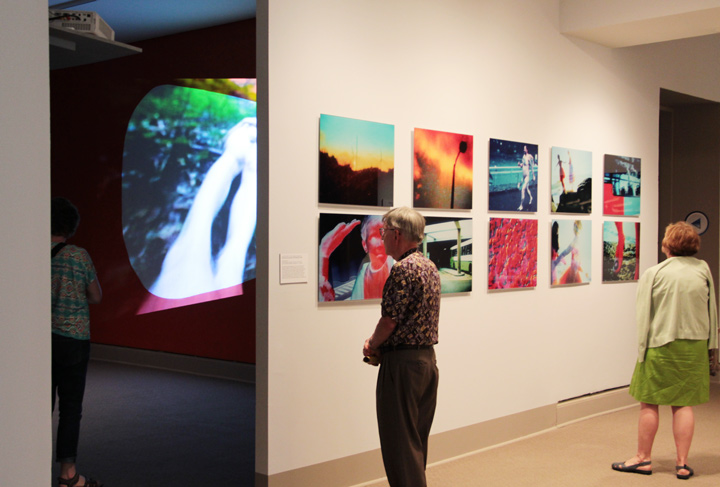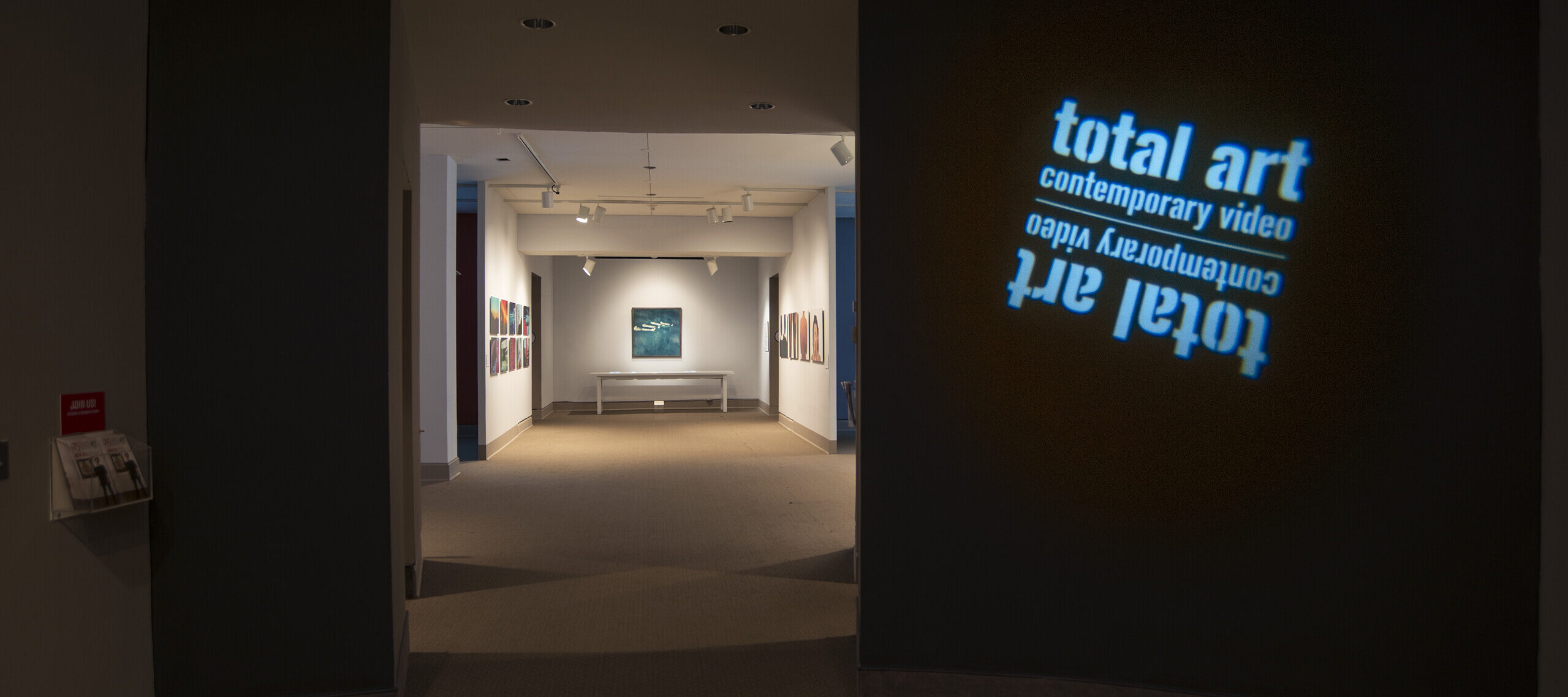One of the nine gallery spaces in Total Art: Contemporary Video is vividly painted with an oblong white space centered on a red wall. This was not a random design decision, but rather a feature of the installation at the request of the artist, Pipilotti Rist (b. 1962, Rheintal, Switzerland), who created the video piece featured in the crimson gallery.

Rist’s Blauer Leibesbrief (Blue Bodily Letter) (1992/98) is part of a genre of video works that are as connected to the installation space as the projected imagery. NMWA’s installations of each of the ten works in the exhibition required specific parameters. The museum’s curatorial and design team worked with the Total Art artists and their galleries to ensure the installation of each video reflected the artist’s original thought process and the work’s integrity. Notably, Rist’s Blauer Leibesbrief, projected at an angle to overlap the oblong white space, was the only work to break from the traditional mode of straight projection and dark, movie theater-esque walls.

The immersive qualities of video art are largely dependent on proper installation, and Rist’s video was no different. The looped imagery in Blauer Leibesbrief is shown through the progression of a handheld camera that sweeps over the artist’s nude body as she lays motionless in a wooded landscape with jewels adorning her body. The work is projected at a sharp right angle, forming a trapezoidal shape on the wall. This work was one of the artist’s first experiments in altering the projector’s orientation.
Pipilotti Rist’s practice aims to introduce viewers to unexpected new perspectives:
“Art’s task is to contribute to evolution, to encourage the mind, to guarantee a detached view of social changes, to conjure up positive energies, to create sensuousness, to reconcile reason and instinct, to research possibilities, to destroy clichés and prejudices. Most people don’t see it that way.”¹
However, there is more to Blauer Leibesbrief than its installation methods. The video’s content reinterprets the female nude motif and its traditional relationship to the viewer’s gaze in the art historical and cinematic canons. Rather than show Rist’s body from a distanced, full-length perspective, the artist obscures the viewer’s gaze, inhibiting an erotic reading by placing the camera as close to the body as it can get. In that sense, Blauer Leibesbrief follows Rist’s explanation of art’s function as it dismantles banality—both in method and content.
Visit NMWA on Wednesday, July 2, at noon for NMWA’s weekly staff-led gallery talks to learn more about Rist’s Blauer Leibesbrief (Blue Bodily Letter). Chief Curator Kathryn Wat will lead a 30-minute conversation and viewing of the work—come make the most of your lunch hour!
Notes:
1.Pipilotti Rist as quoted in Hans Ulrich Obrist, “I rist, she rists, he rists, we rist, you rist, they rist, tourist: Hans Ulrich Obrist in Conversation with Pipilotti Rist,” in Pipilotti Rist (New York: Phaidon Press, Inc., 2001), 10.
